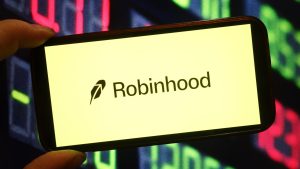Today in Wall Street irony comes the news that a fund set up to protect investors from so-called black swan events has just been hammered by … well, by a type of market “swan” that even it didn’t predict.
A pink swan? An orange swan? A piebald swan? You make the call.
The fund in question is the Amplify BlackSwan Growth & Treasury Core exchange-traded fund —
SWAN,
— which is supposed to protect you from market volatility, but which instead has plunged nearly 25% from its peak in late 2021. The fund, with $240 million in assets, has now underperformed a basic balanced portfolio made up of 60% U.S. stocks and 40% U.S. bonds over one year, over three years and since its November 2018 launch.
The reason? The 2022 rout in the bond market and the simultaneous plunge in stocks.
“ ‘Last year was a three-standard-deviation event in terms of bonds and equity.’”
— Bill Belden, president of Amplify
“Last year was a three-standard-deviation event in terms of bonds and equity,” says Bill Belden, president of the fund company Amplify. “What has happened is bonds have performed terribly, and certainly over the last year and a half, equities have performed poorly as well.”
Going back to the 1920s, he says, there are just four other years in which the fund’s strategy would have ended up losing you money: 1931, 1941, 1969 and 2018.
I don’t mean to give Belden or the fund company a hard time. They are doing what they said they would do, and the strategy is not completely crazy. During the March 2020 COVID-19 crash, the fund did just what investors hoped: It fell less than 10%, while the S&P 500
SPX,
plunged by a third and even the balanced portfolio fell at one point by nearly a quarter.
But the fund’s more recent woes do show how impossible it is to protect yourself against the sudden arrival of swans of a different color.
The term “black swan” was coined in the 2000s by finance professor and author Nassim Nicholas Taleb, who wrote a book with that as its title. The term refers to unexpected and supposedly unprecedented events that upend your expectations, like when Europeans first saw black swans in Australia in the 18th century. The book was a hit because it came out around the time of the 2008 financial crisis, which was precipitated by the first nationwide collapse in U.S. home prices since World War II — something clowns on Wall Street had claimed was somehow impossible because it had never happened before. (Well, not since the 1930s, anyway.)
Also read: Black Swan author Taleb: Stock market ‘way too overvalued’ relative to current interest rates
The idea that something might come out of the blue and wallop all your expectations was shocking and amazing news to a whole host of people.
It was almost as if the Black Death, the Reformation, the French Revolution, World War I and about a million other unprecedented events had never happened.
“ As ever, I am left wondering what, if anything, people actually learn in history class at school. ”
As ever, I am left wondering what, if anything, people actually learn in history class at school.
The Amplify BlackSwan Growth & Treasury Core ETF uses a strategy that was popularized by Taleb, although he has no connection with the fund whatsoever. It invests 90% of its money in Treasury bonds for security and 10% in call options on the stock market to capitalize on market growth. The rationale is that your downside is limited because you are mostly in bonds, while the call options give you high-volatility exposure to each and every stock market boom.
Belden explains that the fund uses a portfolio of reasonably long-term Treasury bonds, with overall duration of 10 years, meaning that, roughly, you’d expect them to rise or fall about 10% with every 1-percentage-point change in longer-term interest rates.
Also read: 14 dividend stocks yielding 4% or more that are expected to increase payouts in 2023 and 2024
As for the stock-market options: The fund uses call options — leveraged bets — on the State Street SPDR S&P 500 ETF Trust
SPY,
The bets are for six months to one year and are updated every six months. These are leveraged bets that the market will boom over that period: The call options give the “option” to buy the SPDR at a prearranged price at any point up to when the option expires.
The Black Swan strategy is actually tracked by an index, the S-Network BlackSwan Core Total Return Index.
The issues include the awkward problem that options cost money — usually a lot of money. If they didn’t, they would be an easy way to make free money and everyone would buy them, and the people selling them would go out of business. For example, with the State Street SPDR S&P 500 ETF Trust at $408 at the time of writing, the nearest thing to one-year calls at the money — the $410 calls that expire on March 28 of next year — will cost you about $40. So that option will only turn a profit if the SPDR is worth at least $450 — $410 plus $40 — a year from now. This is why some mutual funds pursue almost the exact opposite strategy, investing most of their money in the stock market and then selling options for extra revenue, on the assumption that over the long term, people who buy options overpay.
Belden believes that last year’s turmoil in the markets, when stocks and bonds both fell, was a bird of rare plumage. In due course, he says, he expects “correlations will return to historic norms.” We shall see.
Now read: Investors are mad as hell at advisers, and it’s not just market performance that’s to blame
Also: If you haven’t filed your taxes yet, here are 11 last-minute tips to help
This post was originally published on Market Watch





